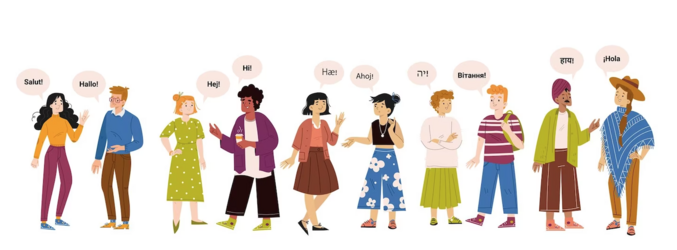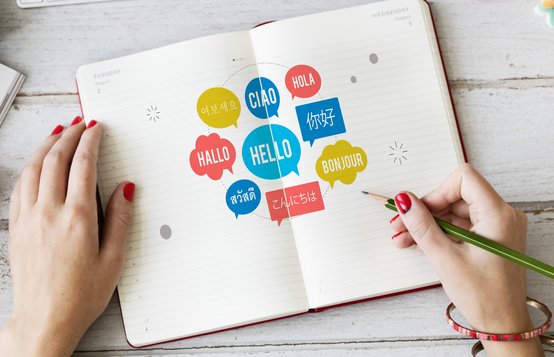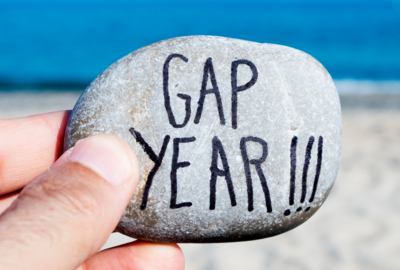
The importance of a greeting in different languages
Greeting is a form of courtesy and politeness, whether in formal or informal settings. When you travel you often find yourself in contact with other people, in airports, stations, hotels, stores, restaurants and bars, but also on the street or inside public transportation. It is important to say "hello" in certain situations, either out of politeness or if you want to start any kind of conversation. This does not mean that you will necessarily have to memorize the word hello in every language in the world in order to travel, but that learning to say hello in the local language is a good way to enhance your experience abroad (and to broaden your linguistic and cultural background). Saying "hello" is often the first step in establishing a relationship with someone, asking for information, or making small talk with your seat neighbor on an airplane. Greetings are the basis of any conversation, which is why they are often mentioned among the first things to learn when studying a new language.
Saying hello in the most important languages

Not all languages are the same, and this applies both to the alphabet used and the sound of words, but also to the number of speakers. Some languages are more common because they are used by millions and millions of people, while others are in danger of disappearing within a few generations. Among the most widely spoken languages in the world are English and Mandarin Chinese, with over a billion speakers, followed by Hindi, Spanish, French, and Arabic. Next in the rankings are Bengali, Russian, Portuguese, and Urdu. The rankings of the various languages may vary depending on the importance of the language in the place you are considering, that is, whether it is a native language, a second language, or a studied language.
If you want to learn how to say hello in the world's most common languages, you can start by saying "hello" in English. You can say "hello" or "hi" in all countries where English is spoken, such as the United Kingdom and the United States, Australia, Canada, and New Zealand. You can instead use "salut" or "bonjour" in France, but also in the Canadian province of Quebec, Belgium, Morocco and Tunisia, and with all those peoples who also communicate through French, such as the Democratic Republic of Congo and Cameroon. Do you want to greet someone in Russian? You can use the word "privet."
In Spain and many Latin American countries, however, you can greet in Spanish with "hola." We are talking about Argentina, Guatemala, Peru, Uruguay, Bolivia, Venezuela, Cuba, Chile, and Colombia, as well as Panama, Paraguay, Costa Rica, the Dominican Republic, Ecuador, and various other countries where Spanish is the native language. Portuguese, on the other hand, is spoken in Portugal and Brazil, but also in countries such as Mozambique, Angola, Cape Verde, Guinea Bissau, and East Timor. Here you can say "hello" using the word "oi" as well as "olá."
Mandarin Chinese is the official language in Singapore, Malaysia and Taiwan, and of course in China. If you are in any of these countries, you can say "hello" with "Nǐ hǎo," or 你好. In Hindi, on the other hand, you can say "hello" using the word "namaste," which is also well known to us Westerners. Arabic, as we have seen, is also one of the most widely spoken languages in the world. In this case it is a language used in Saudi Arabia and the United Arab Emirates, in Tunisia, in Qatar, in Somalia, in Egypt, in Iraq, in Lebanon, in Oman, in Algeria, in Israel, Jordan, Sudan and other countries in Africa and Asia, where you can greet with "as-salāmu ʿalaykum" (i.e. ٱلسَّلَامُ عَلَيْكُمْ). Bengali is the language spoken in Bangladesh and India. According to various statistics, by 2022 Bengali is spoken by more than 270 million people. To greet in this language you have to say "Hyālō" (i.e. হ্যালো).
How to say hello in all the languages of the world

We saw above how to say "hello" in the world's most common languages, from Mandarin Chinese to Arabic, English to Spanish, Russian to Hindi. Below you will find ways to say hello in all the world's languages, from the most widely spoken to the less common.
Afrikaans - hallo
Albanese - përshëndetje
Amharic- ሃይ
Arabic- ٱلسَّلَامُ عَلَيْكُمْ
Armenian- Ողջու՜յն
Assamese - নমস্কাৰ
Aymara - Kamisaki
Azero - salam
Bambara - aw ni baara
Basco - kaixo
Bengali- হ্যালো
Bhojpuri - एहो
Belarusian- прывітанне
Burmese- ဟိုင်း
Bosnian- zdravo
Bulgarian- здрасти
Catalan- hola
Cebuano - kumusta
Czech- Ahoj
Chichewa - moni
Chirghiso - салам
Chinese(simplified) - 你好
Chinese(traditional) - 你好
Korean- 안녕하세요
Course- salute
Haitian Creole - alo
Croatian- bok
Kurdish (kurmanji) - merheba
Kurdish (sorani) - سڵاو
Danish- Hej
Dhivehi - އައްސަލާމް ޢަލައިކުމް
Dogri - नमस्ते
Hebrew- היי
Esperanto- saluton
Estonian- Tere
Ewe - Alekee
Filippino - helo
Finnish- Hei
French- salut
Friesian- hoi
Scottish Gaelic - halò
Galician- ola
Welsh- helo
Georgian - გამარჯობა
Japanese- やあ
Javanese- hi
Greek- γεια
Guarani - Mba'éichapa
Gujarati - હાય
Hausa - sannu
Hawaiian - hui
Hindi - नमस्ते
Hmong - nyob zoo
Igbo - ndewo
Ilocano - Hi
Indonesian - hai
English- hi
Irish- Haigh
Icelandic- hæ
Italian - ciao
Kannada - ನಮಸ್ತೆ
Kazakh- сәлем
Khmer - សួស្តី
Kinyarwanda - muraho
Konkani - हाय
Krio - kushɛ
Lao - ສະບາຍດີ
Latvian- Sveiki
Lingala - Mbote
Lithuanian- labas
Luganda - Nkulamusizza
Luxembourgish- Salut
Macedonian- здраво
Maithili - नमस्कार
Malayalam - ഹായ്
Malay- hai
Malagasy- salut
Maltese - Bonġu
Māori - kia ora
Marathi - हाय
Mizo - Chibai
Mongolian- сайн уу
Nepalese - नमस्ते
Norwegian - hei
Odia (oriya) - ନମସ୍କାର
Dutch- hoi
Oromo - Akkam
Pashto - سلام
Persian - سلام
Polish- cześć
Portuguese - Oi
Punjabi - ਹੈਲੋ
Quechua - Allinllachu
Romanian- Salut
Russian - Привет
Samoan - talofa
Sanskrit - नमस्कार
Sepedi - Thobela
Serbian - Здраво
Sesotho - dumela
Shona - mhoro
Sindhi - هاءِ
Singalese - හායි
Slovak- Ahoj
Slovenian- živjo
Somali - waan ku salaamay
Spanish- hola
Sundanese - Halo
Swedish- Hej
Swahili - habari
Tajik- салом
Tamil - வணக்கம்
Tataro - сәлам
German- hallo
Telugu - హాయ్
Thai - สวัสดี
Tigrinya- ሰላም
Tsonga - Xewani
Turkish- Merhaba
Turkman- salam
Ukrainian- Привіт
Uyghur- ياخشىمۇسىز
Hungarian- Szia
Urdu - ہیلو
Uzbek- salom
Vietnamese- Chào
Xhosa - mholweni
Yiddish - הי
Yoruba - Pẹlẹ o
Zulu - sawubona
How to pronounce hello in all the languages of the world

Sometimes what is spelled does not correspond to how it is pronounced, and this applies to both our alphabet and other alphabets used around the world. For us Italians, some words may be more difficult to pronounce than others, especially if we do not know the characters that make it up. This is the case in Japanese or Chinese, for example, but also in European languages such as Bulgarian, Greek and Russian. Below you can find the pronunciation of the word hello in all the languages that use a different alphabet from ours, so as to facilitate interactions with people from all over the globe.
Amharic- hayi
Arabic - as-salāmu ʿalaykum
Armenian - Voghju՜yn
Bengali - Hyālō
Belarusian- pryvitannie
Burmese- hine
Bulgarian- zdrasti
Chirghiso - salam
Chinese (simplified) - Nǐ hǎo
Chinese (traditional)- Nǐ hǎo
Korean- annyeonghaseyo
Dhivehi - assalaam 'alaikum
Georgian - gamarjoba
Japanese- Yā
Greek- geia
Gujarati - Hāya
Hindi - namaste
Kannada - Namaste
Kazakh- sälem
Khmer - suostei
Lao - sabaidi
Macedonian- zdravo
Malayalam - hāy
Marathi - Hāya
Mongolian - sain uu
Nepalese - Namastē
Punjabi - Hailō
Russian - Privet
Serbian - Zdravo
Singalese - hāyi
Tajik- salom
Tamil - Vaṇakkam
Telugu - Hāy
Thai - S̄wạs̄dī
Ukrainian- Pryvit
Yiddish - hi






